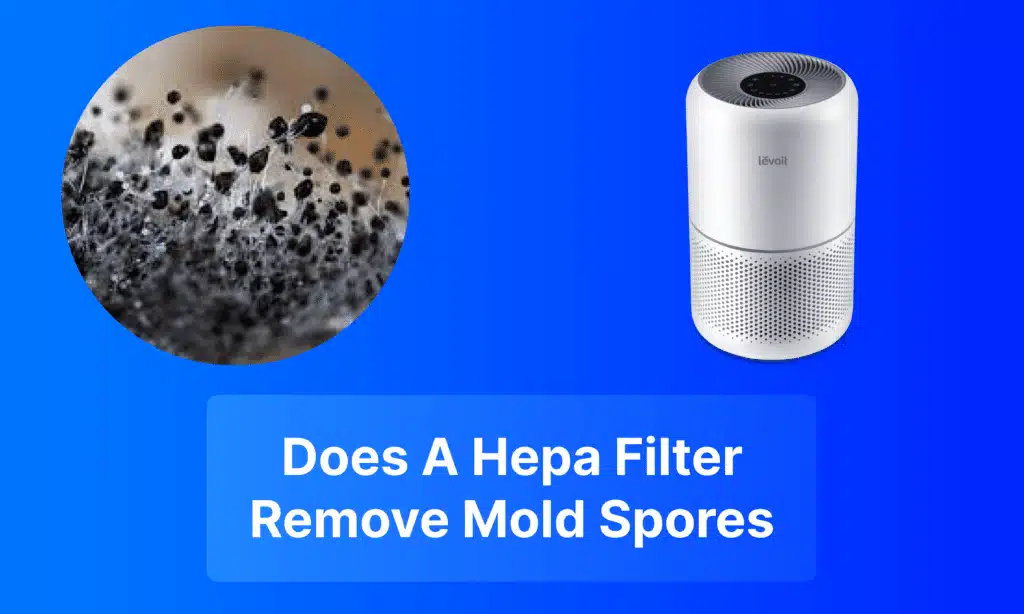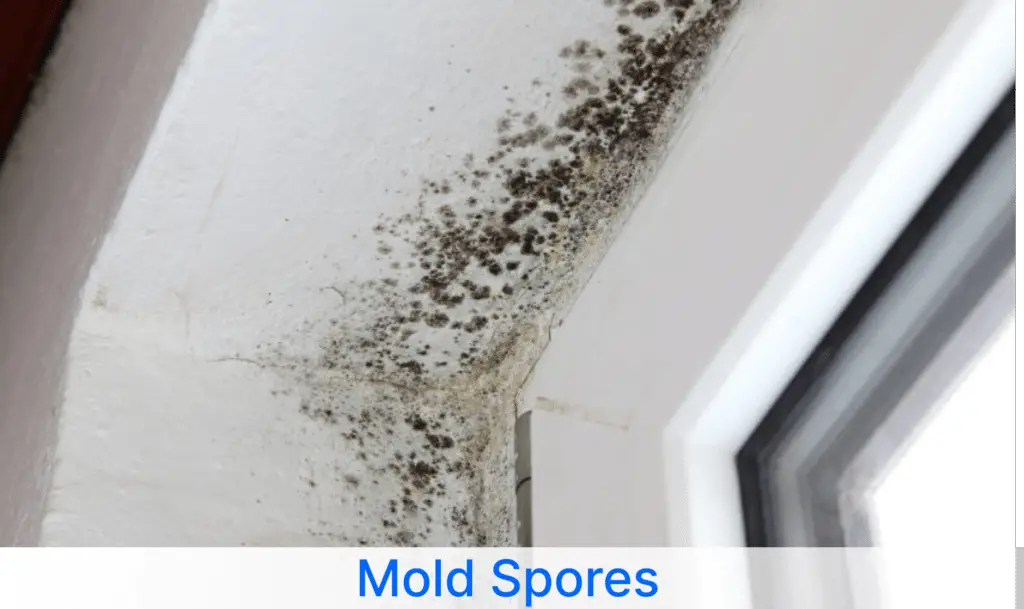In this blog post, we will explore the question: does a HEPA filter remove mold spores?
We will discuss how air purifiers can help control the spread of mold spores in your home, whether they are effective in capturing mold spores, and how to use them in conjunction with other treatments to prevent and treat mold issues.
Mold is a common problem in many households and can be detrimental to both the health of individuals living in the home and the structural integrity of the building.
While it’s important to treat active mold growth on surfaces, it’s also important to prevent the spread of airborne mold spores that can lead to further contamination. This is where air purifiers come in.
Whether you are dealing with a current mold problem or simply want to prevent one from occurring, this post will provide you with valuable information on how air purifiers can help keep your home healthy and safe.
What is Mold & its Problem?

Mold is a type of fungi that can grow indoors and spread quickly over various surfaces in a home.
It is a problem because it thrives in high humidity and moisture, which can indicate deeper issues like leaking pipes, poor ventilation, or excessive moisture in a home.
If left untreated, mold can cause significant damage by breaking down organic materials like wood and fabric. Removing mold promptly is crucial to prevent further damage and ensure a healthy living environment.
Do Air Purifiers Remove Mold?
Although air purifiers cannot eliminate mold that has already grown on surfaces, using an air purifier with a true HEPA filter is a crucial step in removing mold spores from the air.
By properly utilizing an air purifier with a true HEPA filter, all of the air in a room can be circulated multiple times per hour. As the air passes through the filter, mold spores and other particle pollutants become trapped in the fibers, leaving clean and fresh air to be released back into the environment.
This is particularly helpful in preventing mold spores from settling on surfaces, whether they come from existing mold problems or from the outdoor environment.
What are the different Types Of Mold?
There are several different types of indoor mold that can be found in homes, including:

- Acremonium
- Alternaria
- Aspergillus
- Chaetomium
- Cladosporium
- Fusarium
- Mucor
- Penicillium
- Stachybotrys (Black Mold)
Each type of mold has different characteristics, growth patterns, and health effects.
Acremonium is a toxigenic mold that starts out as a small moist spot and transforms into a powdery substance that could be pink, grey, orange, or white.
Alternaria is an allergenic mold that is typically found around showers or bathtubs and can cause asthma attacks and allergy symptoms.
Aspergillus is another type of allergenic mold that can feed off a variety of organic materials for nutrients, including leather and fabrics.
Chaetomium is a pathogenic and sometimes toxigenic mold that typically appears in water-damaged areas and can cause skin and nail infections.
Cladosporium is an allergenic mold that thrives in a moist environment and is commonly found on carpets or wallpaper.
Fusarium is both an allergenic and toxigenic mold that tends to grow in areas that are cold and wet, often appearing indoors on carpets.
Mucor is an allergenic mold that has a white or grey appearance and grows quickly in thick patches, usually near air conditioning systems or damp carpets.
Penicillium is an allergenic mold that is commonly found on surfaces with water damage such as carpets, wallpapers, and mattresses, and is associated with respiratory issues such as asthma and chronic sinusitis.
Stachybotrys, or black mold, is a toxigenic mold that can cause serious health problems and is typically found in areas with prolonged water damage, such as flooded basements or leaky pipes.

Source: www.ncbi.nlm.nih.gov
How Truly Does Hepa Filter Remove Mold spores?

The air purifiers that are most effective at removing mold are those that use True HEPA filters. The acronym HEPA stands for High-Efficiency Particulate Air, and these filters are designed to capture even the tiniest particles, including mold spores, that can be found in the air.
True HEPA filters are considered to be even more effective than regular HEPA filters because they are held to even higher standards of efficiency.
While typical HEPA filters are designed to capture 99.97% of particles that are larger than 0.3 microns, True HEPA filters are capable of capturing at least 99.99% of all particles that are 0.1 microns or larger, as proven by third-party laboratory testing conducted by Alen.
It’s worth noting that mold spores usually range between two and ten microns in size, so True HEPA filters are a reliable solution for removing mold spores from the air in your home.
How to Select an Air purifier For Mold spores removal?
When selecting an air purifier to combat mold in your home, it’s essential to consider the size of the room where you’ll be using it. For optimal performance, you’ll need an air purifier that can efficiently clean and circulate all the air in the room within a reasonable timeframe.
If you’re looking to purify a large room or a common area, we recommend the Alen BreatheSmart 75i. With the ability to clean 1,300 square feet of space every 30 minutes, this air purifier is perfect for use in living rooms and master bedrooms.
The device operates quietly and effectively to circulate the air and capture mold spores, helping to keep your home clean and healthy.
For smaller spaces, such as a child’s bedroom or home office, we suggest the Alen BreatheSmart 45i. With coverage of up to 800 square feet, this air purifier is ideal for smaller rooms. Like the BreatheSmart 75i, this device operates quietly while efficiently cleaning the air in the room, including capturing mold spores to promote a healthy environment.
How to Identify Mold?
identifying mold in your home can be a challenge since there are various types of mold, and mistaking it for dirt can be a common mistake. To help you identify mold, follow these steps:
- Perform a bleach swab test on the concerned spots. Dip a cotton swab in diluted bleach and swipe the area. If it lightens after a minute or two, it could be mold; if it remains dark, it is probably dirt.
- Probe the area to see if it crumbles. If the area appears to be mold, you must determine if it’s just surface-level damage or deeper. If it’s sturdy and has the same texture, it’s likely a surface-level mold that can be cleaned with a bleach solution. If it feels soft or crumbles, it means the fungi have spread and created rot as it feeds off nearby surfaces.
- Check for leaks in nearby pipes and surrounding rooms. Water can travel in any direction once absorbed into materials like drywall. Check for wet spots on walls and ceilings both indoors and outdoors, especially around downspouts, where water flows out near a wall, as this can cause rot over time. Also, check the area around indoor vents for signs of mold, as this could indicate an insulation problem with the air duct.
Once you’ve identified the mold and how deep it goes, and have an idea where it’s coming from, the next step is to find out which type of mold you’re dealing with, so you can take the necessary steps to remove it from your home.